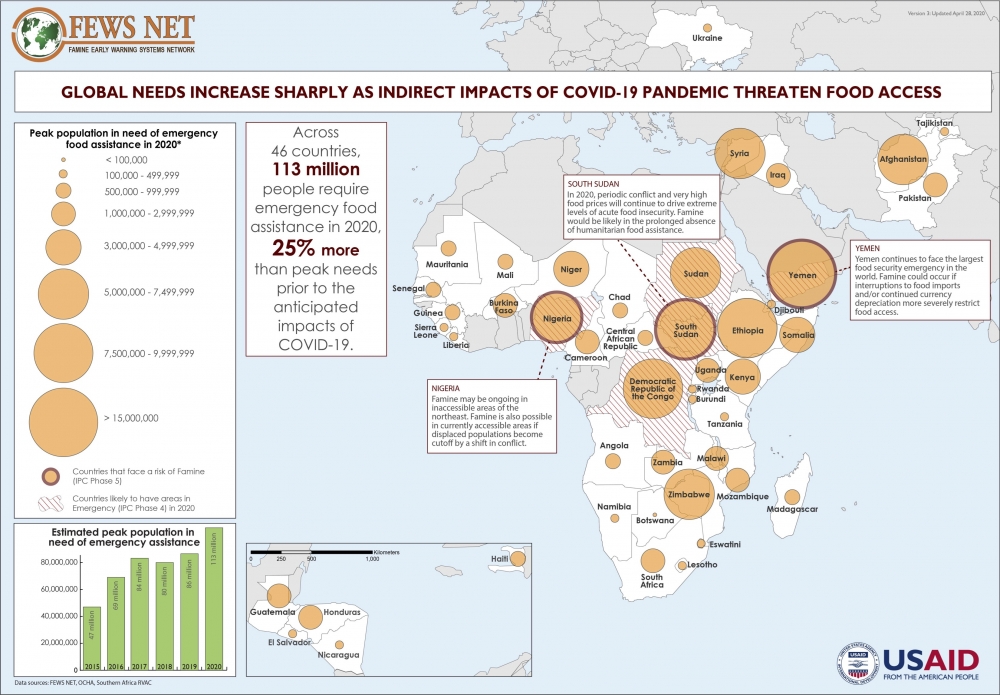
Pandemic Famine Response


The COVID-19 crisis has made many things less certain. For millions of people, this includes access to food.
The pandemic has exacerbated food insecurity across the globe, according to the Famine Early Warning Systems Network (FEWS NET), a partner of UC Santa Barbara’s Climate Hazards Center. The organization estimates that, across the 46 countries it monitors, 113 million people will need humanitarian food aid in 2020. This is roughly 25% more than the group anticipated prior to the pandemic, and an increase of about 31% over 2019.
For more than a decade, the Climate Hazards Center (CHC) has provided critical analysis to FEWS NET, a project of the United States Agency for International Development, and is helping the organization craft its response to the pandemic. The CHC’s work focuses on identifying, early on, areas where droughts may create high levels of food insecurity. This information helps the U.S. Agency for International Development efficiently provide assistance to the right places at the right time.
“In 2019, before the COVID-19 outbreak, the CHC was already helping the United States government cope with a very large increase in severe food insecurity across the globe,” said Chris Funk, the center’s director. Despite global economic growth over the past five years, factors such as conflict, extreme climate conditions and growing wage gaps had led to more than 80% increases in the number of people needing humanitarian assistance.
“Then COVID-19 struck,” Funk said. “In almost every country on the planet, including the U.S., many poor families are seeing reduced incomes and opportunities for work decline.”
Illness and quarantine have restricted people’s ability to work. And for those who contract the disease, increased health expenditures cut into resources that might otherwise have gone toward food. Border closures and trade restrictions have hampered commerce, and a slowing global economy has driven down demand for services. The result is dwindling employment opportunities and a loss of income.
The pandemic has even impacted FEWS NET’s research in the field. “Early on in the crisis our field scientist in southern Africa, Tamuka Magadzire, had a crop tour in Zambia cancelled,” said CHC Principal Investigator Greg Husak. “Other field campaigns planned for East and West Africa have also been postponed or cancelled.”
In 2016 and 2017 the center worked with partners at several different federal agencies to effectively predict droughts in Kenya, Somalia and Ethiopia. The forecast helped prevent potential famine conditions, saving lives.
“In 2020, conditions once again look dangerous,” Funk said.
Fortunately, the team has added a host of tools and techniques to their inventory since 2017. The latest drought early warning systems combine information from climate and land models with satellite-based observations to provide staged depictions of drought. These enable longer forecasts, giving decision makers more time to prepare effective responses.
“Our plan going forward is to support the East African members of our team in producing a FEWS NET alert focused on East Africa, as the first step in a staged early warning process,” Funk said. The team plans to start with very long-lead forecasts, then transition to integrated monitoring and forecast systems to provide a seamless series of alerts.
“The CHC is pioneering and applying cutting-edge drought early warning science,” Funk added, “and is sharing this science and data with counterparts in the developing world.”



